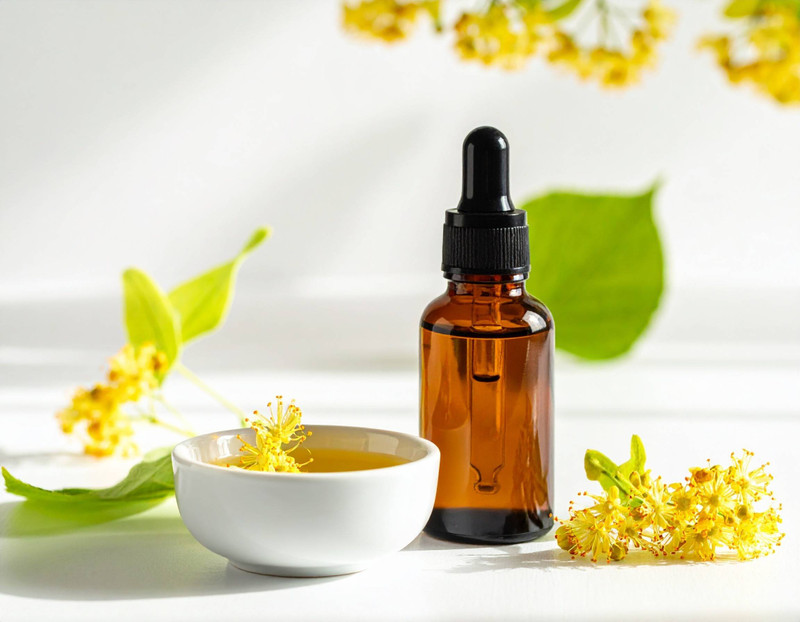Ingredient Spotlight: Witch Hazel
Witch Hazel: (Hamamelis virginiana)
“Miraculous shrub, that thus in frost and blight / Smilest all undismayed, / And scatterest from thy wands of golden light.”
- Elizabeth Akers Allen (published 1894)
Timeless and enduring Witch Hazel. Rooted in centuries of traditional use, this age-old botanical is cherished to this day for its beneficial properties. Some of the most powerful, time-honored skincare remedies don’t come from a lab with fancy names. Rather, they are a gift from the earth itself, revered, not to be underrated.
Gentle, Classic, and Forever Treasured
Witch hazel (Hamamelis virginiana) is a flowering shrub native to North America that has been valued for centuries. Indigenous communities first discovered its healthful properties and today it is a beloved staple in natural skincare and spa rituals around the world.
Its extract is usually distilled from the plant’s bark and leaves, resulting in a clear liquid rich in antioxidants and tannins that can help create a temporary protective barrier for skin. Often alcohol is added to the distillate. However, it is wise to choose a non-alcohol version as it is less drying and gentler on skin.
Which Witch? The name witch hazel has nothing to do with witches or magic spells, although the plant’s benefits might feel magical. It gets its name from its association with "water-witching," the practice of using forked branches as dowsing rods to find underground water.

Water-Witching - A veritable living compass in the search for life-giving water, Witch hazel was held in hand, its branches believed to point the way to hidden springs and underground water sources where wells were scare or unreliable.

Early English settlers in North America noticed that Indigenous peoples used witch hazel twigs in remedies, and they also found the branches useful as divining rods for water witching.
The "witch" term comes from the old English word “wice" or “wynch," meaning "bendable" or "pliant." Supposedly the branches would bend when over water, helping to locate much-needed underground water sources at the time. Over time, the name stuck—wynch hazel became witch hazel.
Witch hazel is one of the only plants in North America that blooms in late fall and winter. While most trees and shrubs are bare, witch hazel bursts into bloom with delicate, spidery yellow (sometimes orange or red) flowers. Its blossoms can even appear with snow on the ground, releasing a light, spicy fragrance.
This unusual trait made witch hazel symbolic of healing and resilience, thriving and showing beauty even in the coldest, harshest seasons.
Why We Love Witch Hazel for Skin
Witch hazel is brimming with antioxidants and natural tannins, giving it a unique ability to calm, clarify, and protect the skin. But there is much more to its skin-loving benefits.
Tones & Refines – Witch hazel’s natural astringency helps tighten pores and balance oil production, leaving skin smooth and refreshed which can make pores appear smaller. It can also reduce oil and soothe skin.
Soothes & Calms – Witch hazel helps to calm redness and itching, making it perfect after facials, waxing, or sun exposure.
Refreshes & Awakens – Cool compresses with witch hazel reduce puffiness, especially under tired eyes.
For Your At-Home Spa Rituals:
- Facial Mists & Toners – Spritz after cleansing for a refreshing, pore-toning effect.
- Cooling Compresses – Witch hazel contains natural tannins and other compounds that can help reduce temporary redness, firm the appearance of skin, and offer a cooling sensation. Apply chilled witch hazel on cotton pads for calming after mild skin treatments or for under eye puffiness.
- Aftercare – Also great for calming skin after waxing, shaving, or sun exposure.

Magical and Spiritual Properties of Witch Hazel
The fact that Witch Hazel blooms in the coldest of seasons while other plants have gone dormant is part of why people long ago saw the plant as mysterious and almost magical. Not only does witch hazel bring calm and balance to the skin, but it also carries this beautiful story of endurance and unexpected blooming when everything else has lost its blossoms.
I am always inspired by the wisdom and resilience of nature. Witch Hazel’s ability to flower in winter symbolizes hope and new beginnings. Because witch hazel blooms in late fall and winter when nearly everything else is bare it has come to symbolize strength through adversity and renewal in hard times. Spiritually, it’s often seen as a reminder that beauty and growth can emerge even during life’s colder seasons.
- In some folklore, witch hazel is believed to offer protection from evil forces and negative energies by hanging branches or bark in homes to act as protective talismans.
- Modern folklore may also use it for mending broken hearts.
- In older poetry, witch hazel is described as a symbol of patience, virtue, and inner strength, blooming brightly when all else is dark.
- Due to its long-standing use in traditional wellness practices* witch hazel is also associated with instilling comfort and restoring vitality, especially during challenging times.

Some traditions believe witch hazel to be otherworldly, the "Tree of Knowledge," suggesting a connection to wisdom and the mysterious.
Traditional Use - Native American tribes used its bark and leaves to soothe skin and insect bites. Likewise, early settlers integrated it into natural self-care traditions. By the 19th century, distilled witch hazel water was fundamental in apothecaries across America and a common household staple. It is still valued for its versatility and standing in everyday care including modern-day wellness shelves.
PRECAUTIONS: While witch hazel is generally considered gentle and safe, some preparations contain alcohol, which can be drying for certain skin types. For those with sensitive or dry skin, alcohol-free witch hazel is a better choice. A simple patch test helps ensure comfort and calm. Also, during pregnancy or breastfeeding, it’s always wise to check with a trusted healthcare provider before introducing any new skincare ingredient.
As a natural astringent, witch hazel is most beneficial in moderation. Overuse may strip the skin of its protective oils, so we recommend it as a balancing step in a broader ritual.
For external use only.




